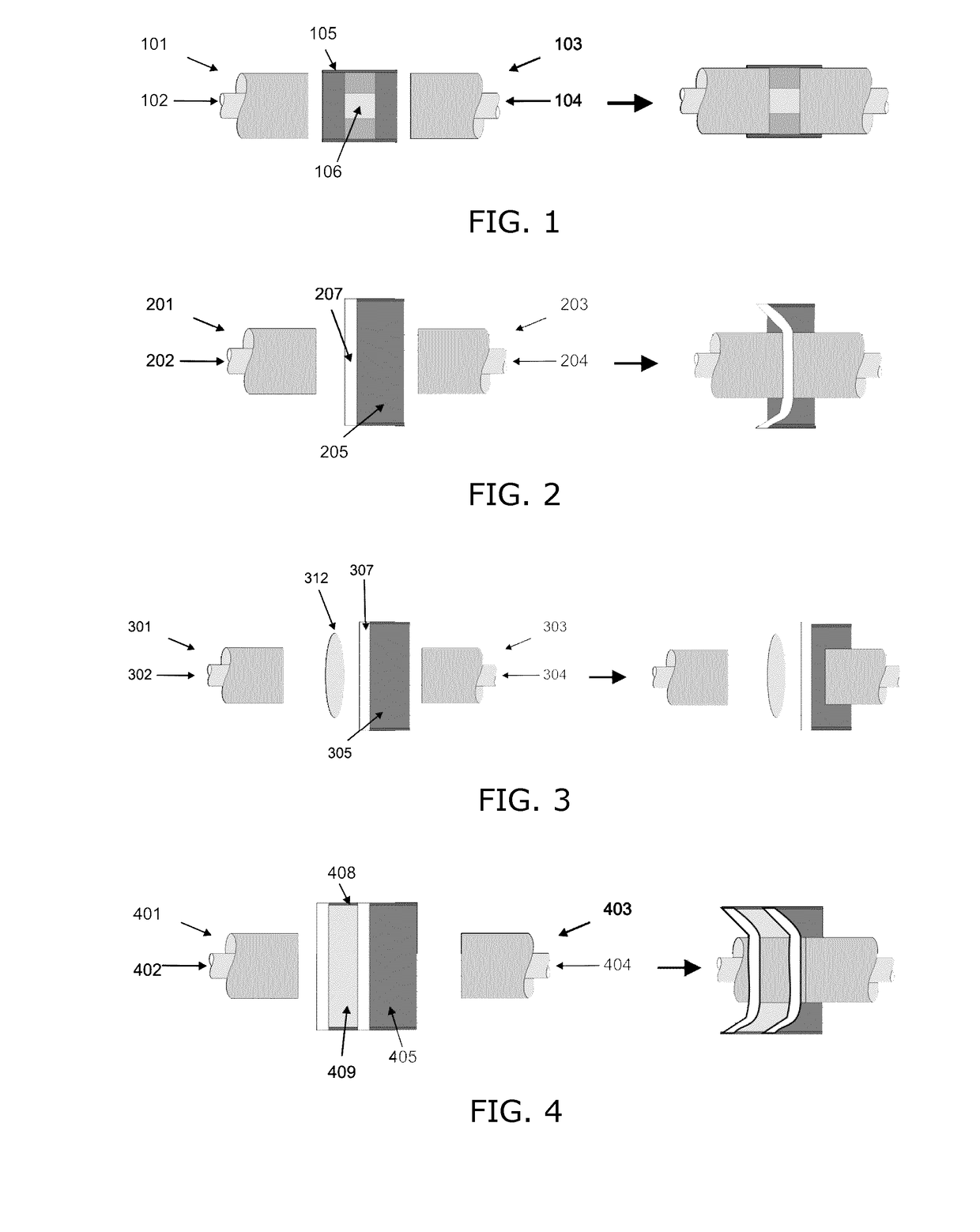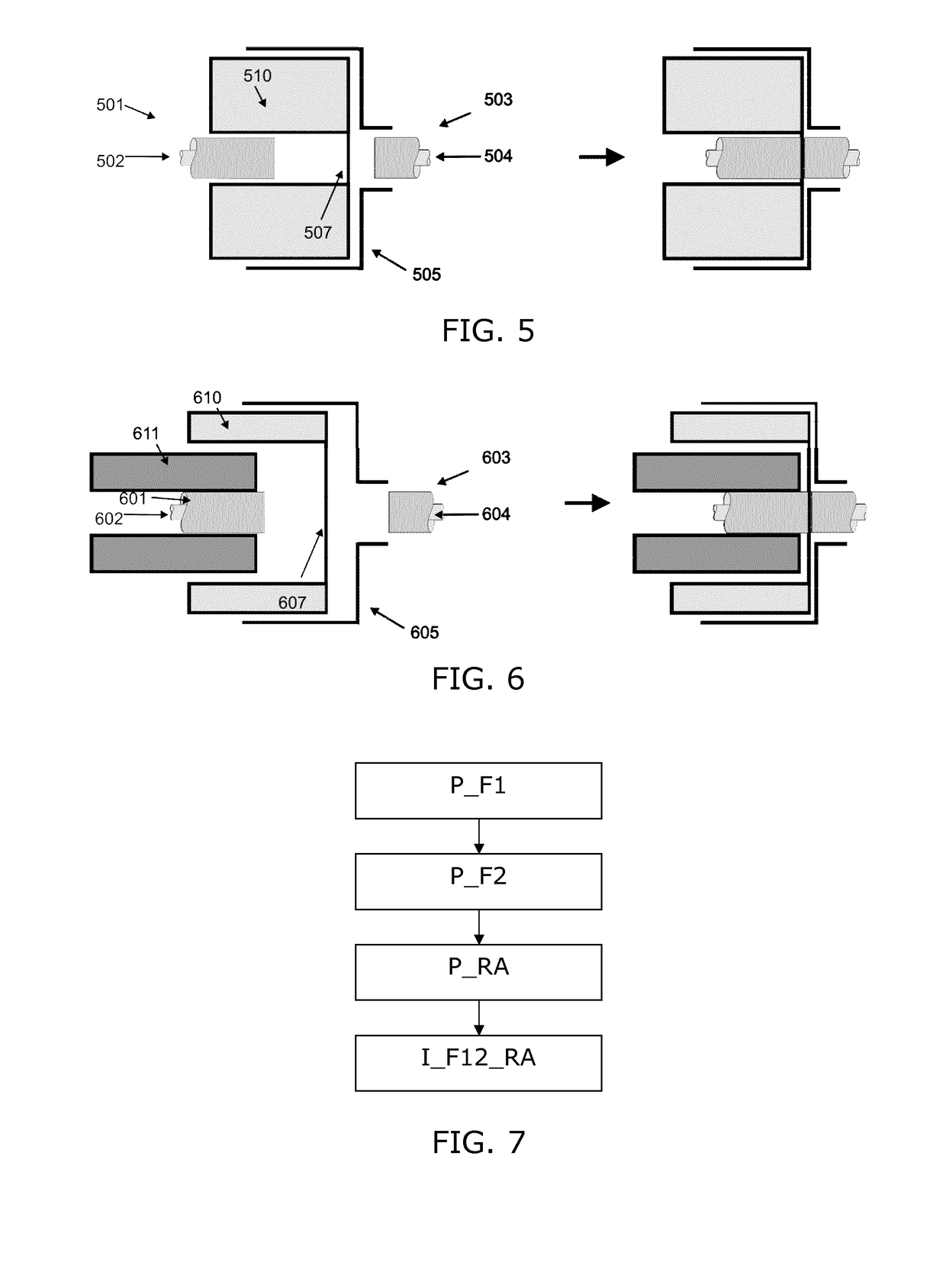Optical connector for sterile applications
- Summary
- Abstract
- Description
- Claims
- Application Information
AI Technical Summary
Benefits of technology
Problems solved by technology
Method used
Image
Examples
Embodiment Construction
[0043]FIG. 1 illustrates a side section view of an optical connector system embodiment where a receptacle arrangement forms a connecting piece 105, 106 for connecting two ferrules 101, 103. To the left a sketch shows the system in a disconnected state, and to the right the system is shown in a connected state. First and second ferrules 101, 103 have respective first and second optical fibers 102, 104 arranged therein. The optical fibers 102, 104 may be multi-core optical fibers, and they reside in the center of the ferrules 101, 103. Ends of the ferrules 101, 103 are inserted from opposite ends of a receiving body 105 forming part of a receptacle arrangement. An optical element 106 in the form of a short optical waveguide, e.g. multi-core waveguide, is arranged inside the receiving body 105. The optical element 106 serves to provide an optical connection between the first and second optical fibers 102, 104 in a connected state, namely by forming an optical transmission path, or mult...
PUM
 Login to View More
Login to View More Abstract
Description
Claims
Application Information
 Login to View More
Login to View More - R&D
- Intellectual Property
- Life Sciences
- Materials
- Tech Scout
- Unparalleled Data Quality
- Higher Quality Content
- 60% Fewer Hallucinations
Browse by: Latest US Patents, China's latest patents, Technical Efficacy Thesaurus, Application Domain, Technology Topic, Popular Technical Reports.
© 2025 PatSnap. All rights reserved.Legal|Privacy policy|Modern Slavery Act Transparency Statement|Sitemap|About US| Contact US: help@patsnap.com



